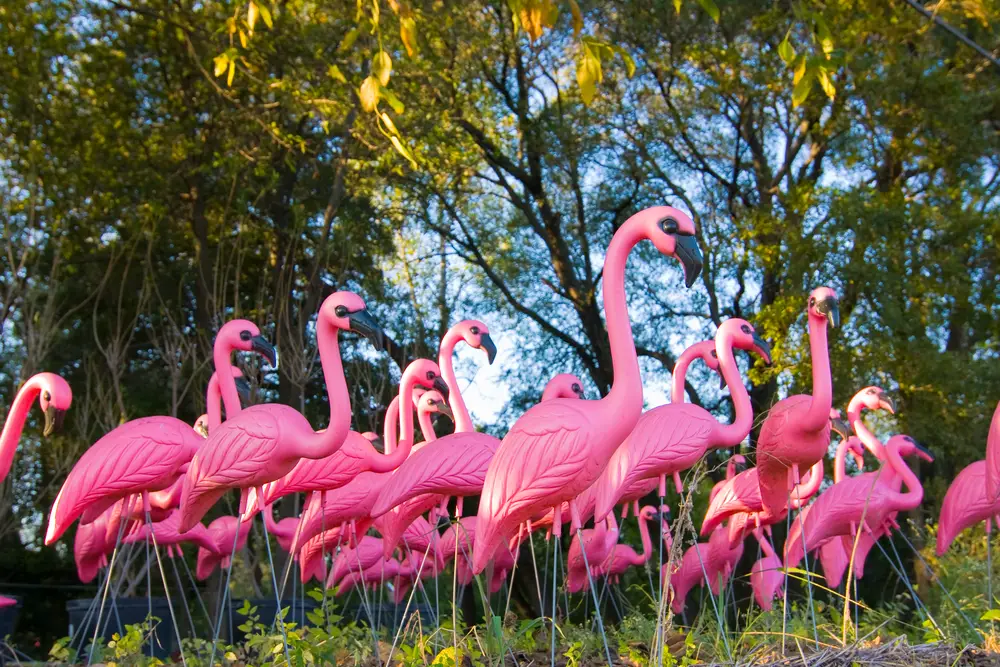You might not see this decorative lawn icon dotting the front yards of suburban homes much anymore, but the plastic pink flamingo used to be a big deal. Now it has grown into a form of art.
The birds first came around in 1957, and they didn’t start in a place where you would expect flamingos to be. They were invented in Leominster, Massachusetts. Leominster was a mecca for plastics, not because of the eventual invention of the plastic flamingo, but because of the plastic comb.
It began when Don Featherstone was hired by Union Products, a plastic company in Leominster. They gave him the task of sculpting a pink flamingo. Featherstone used photos from National Geographic to make the bird since there were no flamingos hanging out in Massachusetts. The bird eventually got molded through a plastics injection process into a three-dimensional flamingo lawn ornament. The birds cost $2.76 a pair when they got into stores.
The plastic pink flamingo began to show up in yards as a decorative ornamental piece, often to differentiate a home from the other homes in a subdivision. During this time, many homes in these subdivisions were similar in construction, and the pink flamingo lawn ornament became a way to brighten up the owner’s yard and set it apart from the rest of the yards.
The popularity of the plastic pink flamingo grew as more and more people began to install the lawn ornament in the late 50s, but the pink flamingo suffered a backlash in the 1960s with the push against conformity. Pink flamingos in the lawns of suburban homes became things that weren’t natural, and people began changing to other more natural objects to decorate their lawns. Sears even stopped selling them by 1970.
But the decline didn’t last long. Once the 70s began to take hold, pink plastic flamingos went from being shunned as a tacky piece of yard art to something that was different, cool, and a piece of pop art. A status it continues to hold today.
The flamingo, of course, is the bird that is known for standing on one leg with the other tucked under its body. Flamingos develop their pink or red coloring because of aqueous bacteria and beta-Carotene from the food they eat. You won’t have to worry about the plastic ones needing food to get their pink color, however, and you can still pick one up at a store or online.
Sources: Smithsonian Mag, NPR, Boston Globe, Chemical Heritage Foundation


